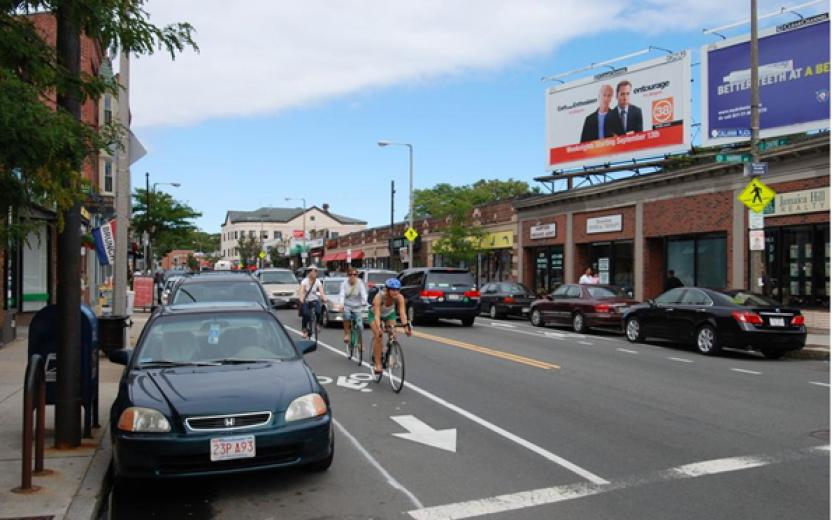1 14
1 14
Sixty miles of protected “cycle tracks” throughout Boston will have 20 miles added by 2018, and will reach 364 miles by 2043.
This city of 170,000 launched the Chattanooga Bicycle Transit System in the summer of 2012, with 30 stations and 300 bikes dispersed around a 2.5-sq.-mile area of downtown. In its first six months of operation, the system provided 12,600 rides resulting in an emissions reduction of up to 8,100 pounds.
Eighteen miles along Lake Michigan in Chicago include Lincoln, Grant, Burnham and Jackson parks.
As the home of the country’s first bike path, built in 1894, New York City boasts 32 miles of bike trails around Manhattan, a 42-mile trail looping through all five boroughs and 13 miles in Central Park.
The "Mile-High City" has more than 100 miles of multi-use trails, 96 miles of bike lanes, 41 miles of sharrows and nearly 400 miles of signed bike routes allowing cyclists to travel along a wide range of elevations. All multi-use trails are completely separate and protected from city streets and highways.
Los Angeles is a cyclist's treasure trove covering city streets and alpine mountains with more than 500 miles of easy-to-technical trails. Popular cycling destinations include the Santa Monica Mountains Trail near the beach, Sycamore Canyon, Backbone Trail, Hell Hill, the San Gabriel Mountains, north of downtown, Strawberry Peak and Gabrielino Trail (known as the Gab).
Madison instituted bike paths in 1972 in the wake of the Oil Crisis. Today a new, four-span arched bridge carries bicyclists and pedestrians over the Beltline Highway, and Madison's Urban Bike Share program features 27 stations and 225 bikes downtown.
Combined, Minneapolis and St. Paul have 84 miles of bike paths and 44 miles of bike lanes on streets with plans to install another 40 miles of lanes. All city buses and trains have bike racks and all office buildings in Minneapolis are required by law to provide bicycle storage, and the city funds half the price of every bike rack any business installs. And if you think folks here can't ride for much of the year, think again. Winter cycling classes are very popular.
Philly has more bike commuters per capita (2.16 percent) than Chicago (1.15 percent) and New York (.61 percent) and rates ninth out of the 70 biggest biking cities. Popular trails include the Schuylkill River, Cobbs Creek, Belmont Plateau in West Fairmount Park and the Navy Yard.
Today’s national bike boom began here in 1973 with a 190-mile bike trail that’s set to expand to 630 miles by 2016 and 962 miles by 2030.
The Seattle biking community is so strong and diverse that the city's bicycle map has three different focus maps for frequent, average and occasional cyclists. Over the last four years, the city has invested nearly $36 million in bicycle improvements funded through a voter-approved transportation levy, and include 129 miles of bike lanes and sharrows, 98 miles of signed routes and 2,230 bike parking spaces. Plus, the whole city joins in on Bicycle Sundays.
A 334-mile shoreline bike trail is being expanded throughout the greater Bay Area to 500 miles, including nine counties, seven bridges and 130
parks.
With hundreds of miles of bicycle-friendly roads, including a 55-mile, car-free urban loop and dozens of cycling trails ranging from easy to highly technical, Tucson has won awards as one of the United States' top cycling cities.
Our nation's capitol features hundreds of miles of scenic cycling trails, both paved and natural. The paved and crushed-stone Capital Crescent Trail is a 13-mile trail built on the former Georgetown branch of the B&O Railroad, which will be extended to Silver Springs, Md., and the Chesapeake & Ohio Towpath covers 184 miles of natural terrain. Paved trails include Washington & Old Domain (20 miles), Rock Creek Hiker (20 miles) and Mt. Vernon (18 miles).

